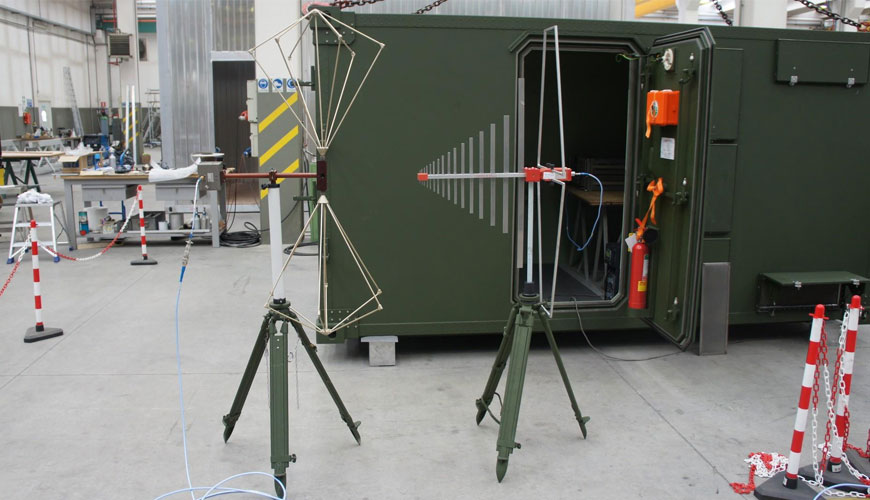

EUROLAB laboratory provides testing and compliance services within the scope of MIL STD 285 standard. The MIL STD 285 standard measures shielding effectiveness over a frequency range of 100 kHz to 10 GHz. All specimens suitable for this test should be applied as a form of cover and shield. Because a wide variety of enclosures are available, enclosure examples can vary greatly. This includes nanomaterials such as glass windows, channels and carbon nanotubes.

As long as the enclosure contains some type of material in a capacity, such as a conduit through which a cable is run, the sample will suffice. On the transmit side, the channel is connected to the test chamber chamber and has a transmitted signal through it. At the receiving end, it is necessary to open the channel from which the signal is measured, for example, to see the signal loss (attenuation) for overall shielding efficiency. The test setup is the same as any other shielding activity, first determining the dynamic range of the unit/sample and the actual measurement of the signal for that particular sample.
The test setup requirements for MIL STD 285 testing are relatively simple. The layout of signal sources measuring equipment, collecting devices and shielded enclosures is detailed in the standard. All power lines, RF cables, and other utilities entering the shielded enclosure must be in place while the tests are performed. Special care should be taken to measure near utility entrances, doors and access panels.
Electromagnetic Barrier: It is a topologically closed surface created to prevent or limit fields and transmitted transitions from entering the enclosed space. It consists of electromagnetic barrier, shield and POE processes. This barrier surrounds the protected volume and, if necessary, special protective volumes.
Electromagnetic Shutdown: A treatment for preventing excessive electromagnetic field leakage at an opening entry point. Examples of techniques for sealing a seam between two metal plates are welding, brazing or soldering, and metal-to-metal contact under applied pressure with a mechanical attachment.
Mission Critical Equipment: It is defined as all the equipment needed to directly support a critical mission, success or failure that could affect the outcome of the war. Mission-critical equipment generally refers to all communications-electronics and support equipment that must be protected to perform critical trans and HEMP attack missions.
Point of Entry (POE): It is a location on the electromagnetic barrier where the shield is pierced and energy can enter the protected volume. This happens unless an adequate POE protection device is provided. POEs are classified as aperture POEs or penetrating conductors based on the type of penetration. They are also generally classified as architectural, mechanical, structural or electrical POEs according to the engineering discipline in which they are encountered.
The layout of signal sources, measuring equipment, acquisition devices and shielded enclosures shall conform to the following paragraphs and figures 1 to 6. The shielded enclosure will be in place while the tests are being carried out. Particular attention will be paid to measuring near utility entrances, doors and access panels.
Antenna, attenuator adjustment when an attenuator is used between the receiver or transmitter and its antenna, whose calibration is used as the basis for desired measurements. The attenuator can be a 50 or 72 ohm transmission line, low input impedance, cascade attenuator. A signal generator will be used to calibrate the attenuator. The attenuator must be able to measure an insertion loss of over 70 dB.
To get an appointment, to get more detailed information or to request an evaluation, you can ask us to fill in our form and reach you.